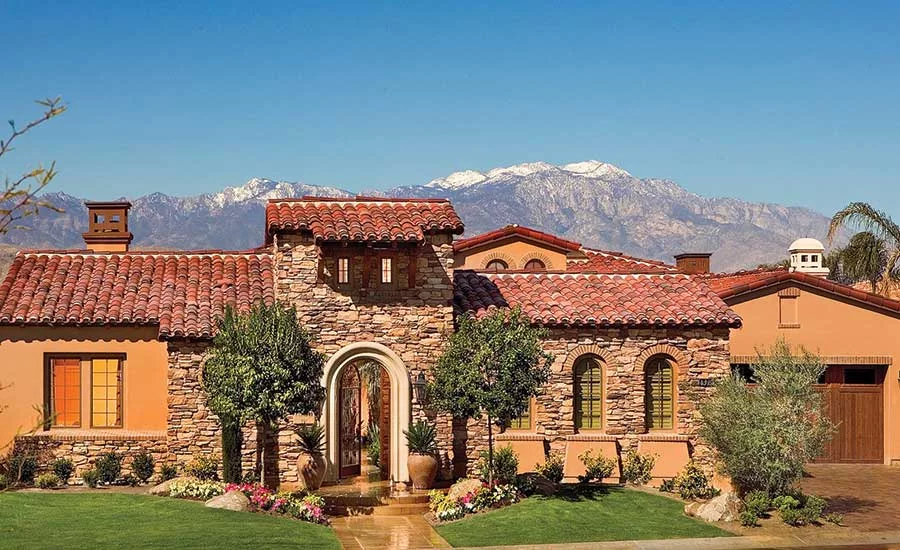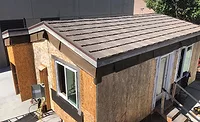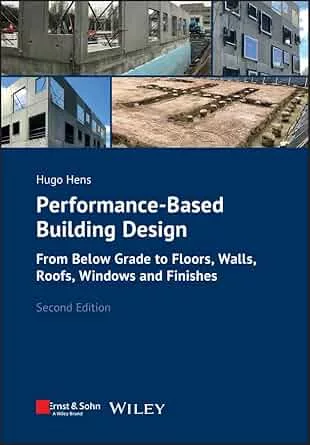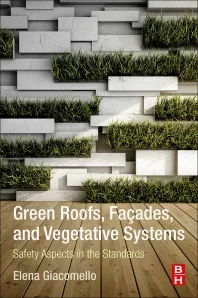Storm Resistance and Roofs
A Roof's Ability to Withstand Severe Weather is Increasingly Important

The main purpose of a roof is to provide a solid weather barrier from the elements, protecting the inhabitants and their possessions (hopefully) over the long term.
The roof is a visually prominent component of the exterior of the building and helps to set the aesthetic tone, influencing the overall architectural style and color palette of the structure. As such, the selection of a roofing product is often influenced by the look of a specific material. However, over the past couple decades, the roof’s ability to reflect the sun’s powerful UV rays and energy and to enhance the energy efficiency of the structure has become a growing concern. Creating hospitable and comfortable conditions indoors while reducing energy usage and costs is now more important to builders and owners than it has ever been.
However, aesthetics and energy performance are just two of the top three primary jobs of a roof. The main purpose of a roof is to provide a solid weather barrier from the elements, protecting the inhabitants and their possessions (hopefully) over the long term. Weather conditions and storms, or more specifically, a roof’s ability to withstand them, is increasingly important as concerns mount over climate change and the severe weather events that accompany it.
Four common roofing materials — clay and concrete tile, stone-coated steel, and composite slate and shake — each provide different weather protection attributes and resiliency benefits. Following are some of the key features and weather variables to consider when selecting any of these four high-performance roofing options.
Clay and Concrete Roof Tile
Sourced and manufactured from naturally occurring geologic material, clay and concrete tile is durable, sustainable, low-maintenance and easy to repair. Additionally, clay and concrete tile offers an excellent cool roof solution, maximizing energy efficiency and energy savings. Clay and concrete tile options are particularly adept at helping to protect against fire and hail and provide excellent energy efficiency.
Fire Prevention
Many areas across the U.S. are at risk for fire, especially those located in Wildfire Urban Interface areas or in regions where drought conditions persist. The roof is critical to fire prevention due to flying embers that could make contact with the roof and subsequently ignite the structure. Both clay and concrete tiles are non-combustible, helping prevent first ignition from occurring on the roof. Many clay and concrete roof tile products have received Class A fire rating, the highest fire resistance rating for roofing. The ICC Evaluation Service indicates that the Class A roof tile can withstand a higher level of fire exposure originating from sources outside the structure.
Hail
Common in many regions of the country, hail storms can wreak serious damage to a roof. While some concrete and clay tile products offer a Class 2 or 3 hail rating, some offer Class 4 hail rating, proving their ability to withstand two-inch ice ball impacts shot from a cannon at 70 miles per hour in accordance with the FM 4473. Hail-rated tile is certified through the Roof Covering Impact Certification Program, which is sponsored by Architectural Testing, an independent laboratory accredited by multiple national agencies.
“Due to the number of hail and fire claims in our region, also known as ‘hail alley,’ I often recommend a roofing system that is not only impact resistant but also provides a Class A fire rating,” says Houston Moore, commercial project manager with Eco Roof and Solar, a Denver, Colo.-based roofing contractor. “A Class 4 hail impact resistant roof system, such as concrete tile, not only delivers durability from catastrophic storms, but also protects our most valuable assets from seasonal fires. When it comes to protecting your home or business property, a Class 4 impact resistant concrete tile is the only way to go.”
Energy Efficiency
The thermal mass and above deck air-flow provided by clay and concrete tile systems make these products some of the most energy efficient available on the market today. Homeowners choosing tile over asphalt shingles can reduce their home energy bills by as much as 22 percent by installing a tile roof, as indicated by the 2005 industry study, “Steep-slope Assembly Testing of Clay and Concrete Tile with and without Cool Pigmented Colors,” conducted by independent Oakridge Laboratories. Results vary based on profile of tile installed, location, weather and other factors.
Stone-Coated Steel Roofing
Stone-coated steel roofing systems are recognized for their durability, lighter weight and cost effectiveness, making them ideal for reroof or storm-damage applications. The strength of steel combined with the natural aesthetics and color of stone deliver improved curb appeal while offering superior protection from severe climate events.
Hail
Stone-coated steel is one of the best possible materials for withstanding the devastating hail storms that impact many regions of the country, providing the highest UL-listed, Class 4 UL impact rating.
Wind
Stone-coated steel roofing panels are proven to resist wind speeds in excess of 120 miles per hour, making this roofing option ideal in regions where high winds occur, such as Florida, Hawaii and the Caribbean coastal markets.
Ice Damming
Stone-coated steel offers protection in severely cold climates where ice damming is problematic. These roof systems provide an “above sheathing ventilated” (ASV) space across the entire roof deck. This horizontal and vertical air space provides above-the-deck air flow and insulation that helps mitigate ice damming and icicle formation issues common in heavy snow areas of the country.
“I’ve been recommending stone-coated steel shingles for over 35 years,” says Steve Davis, sales manager with The Roofing Center Inc., a roofing solutions provider actively serving the Intermountain West region, including the states of Utah, Montana, Idaho, Wyoming and beyond. “With thousands of installations spanning from the Canadian border to Arizona, we have found the shingles to work perfectly in conditions of snow, wind or heat.”
Composite Roofing
Created from high quality virgin resins using advanced manufacturing processes and product design, composite roofing products are a luxury roofing option often designed to mimic noble, traditional materials such as natural slate and wood shake.
This roofing material boasts exceptional beauty and durability, two key attributes contributing to its popularity. Additionally, it is a sustainable solution available in a wide range of cool roof colors that promote environmentally-friendly living while decreasing a home’s carbon footprint and energy consumption by as much as 15 percent, as indicated by the Cool Roof Rating Council and ENERGY STAR.
Water Absorption and Permeation
Composite tile, due to its material composition, is shown (in accordance with ASTM E96/E96M) to be impermeable to water and (in accordance with ASTM C272) to experience no weight gain when in contact with water.
Wind Driven Rain and Uplift
Composite roofing performs well under wind-driven rain conditions and is highly resistant to wind uplift. Testing in accordance with TAS 100-95 and UL 580 proves its ability to withstand winds of up to 110 miles per hour with zero water infiltration through sheathing. Under these conditions, tiles remain intact instead of tearing or blowing off.
Hail
In accordance with UL2218, top quality composite roofing solutions offer a Class 4 hail rating, the highest achievable rating. This makes this roofing type ideal for hail prone areas of the country.
Conclusion
The type of weather and storm events most likely to affect a home or structure depends largely on the region in which it is located. Each climate zone poses unique weather challenges. These environmental events must be accounted for when selecting the right roofing system for your project, as each material offers specific resiliency performance attributes. When assessing which roofing material is ideal for your project, do not rely on aesthetics alone. Consider durability and performance based on your local conditions in addition to energy-efficiency in order to maximize the protection of the structure while reducing environmental impacts and energy costs for the life of the roof.
Looking for a reprint of this article?
From high-res PDFs to custom plaques, order your copy today!





